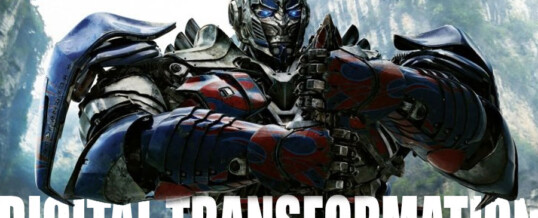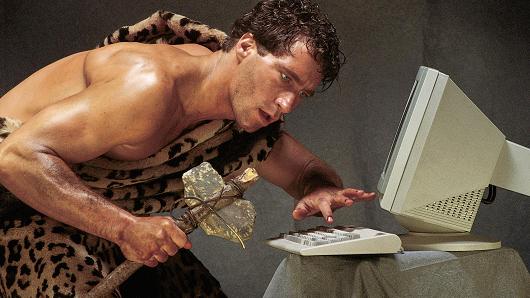
Digital transformation is reimagining business processes, culture, and customer experiences in order to meet changing requirements.
It’s more than just sales; digital transformation is about how you approach and retain customers. As we move away from pen & paper to more modern forms of business management, we can reimagine how our customers engage with us and how we work together. Digital technology is empowering on every level.
For new-aged businesses, don’t wait. Set up a 21st century business from the start and use tools that will protect your organization in case of a fall. A well planned digital strategy will set you up to be agile and flexible, with the potential to grow.
The world is fast-paced and the digital revolution is making it faster. The process of going from a manual to a digital business model is called digital transformation.
Digital transformation can be hard for small business owners, because they are focused on running the day-to-day operations of their businesses. This can lead to neglecting digital transformation, because it’s not top priority. However, if they don’t take steps to keep up with digital transformation, then they will eventually fall behind their competitors and struggle to serve their customers in this new business environment.

Digitization vs Digital Transformation
Digitization
Not so long ago, if you wanted to share information with someone else, you would have to do it the old-fashioned way. Papers are basically useless when you can’t find them anymore, but computers solved that problem for us. Nowadays most records are stored electronically, which is much better for everyone involved. The process of digitizing documents is called digitization. This can be done by transforming analog information into digital data.
Digitalization is also using digitized information to make established ways of working simpler and more efficient. We believe digitalization isn’t about changing how you do business or starting new ones. Instead, it is about continuing to do what you always have but at a greater pace & quality now that your business data can be accessed instantly and no longer need to be trapped in a file cabinet somewhere.
The fundamentals of customer service have stayed the same, but productivity increased greatly when searching through paper ledgers was no longer necessary because it was automated with a few keystrokes.
As digital technologies evolved, people started to see ways for how to use them in business. This is when the idea of digital transformation began to take shape. With new technologies there would be new things you could do.

Digital Transformation
Digital transformation is an ongoing process and it’s something any modern company should be mindful of. It has the power to dramatically change how business gets done and is sometimes even doing so in unforeseen ways. With digital transformation, companies are taking a step back and reevaluating entire aspects of their work, from internal systems to customer service. Businesses are asking themselves big questions like “Can we change our process to get better decision-making, efficiency or customer experience?”
You might not think of them as a traditional business, but Netflix is a great example of a company that was born thanks to technology. They started off as a mail order service that disrupted the brick-and-mortar store market. Wide-scale streaming video became possible after digital innovations were made. Today, Netflix competes with traditional broadcast and cable television networks and production studios by providing a library of on-demand content.
Netflix offers streaming videos directly to viewers and gleans insight into their viewing habits. This insightful data influences their strategies from the development of first-run shows to the design of their user experience. It’s a prime example of digital transformation: taking advantage of available technologies to optimize company strategies.
What’s possible with Digital Transformation
Digital transformation is all about understanding the capabilities of your tech. That doesn’t mean running on the same speeds as before, but instead taking a look at what new possibilities can be explored. You should ask questions like “what has our tech really been capable of and how can we take steps to make optimal use out of it?”
People used to choose movies to rent using the traditional method of going to a store and scrolling through shelves of tapes and discs. Now, it’s much simpler – with Netflix, there are lots of different content libraries on your personal device that you can browse through. Everything is very well organized and if you scroll down a bit, you’ll find recommended shows for you! That’s a movie lovers dream.
Remember, the technology is there to amplify your output. Probably in ways you didn’t think were initially possible. It’s imperative to examine what data is collected and find new ways to use it to make your customer experience better.

How to adapt to your business
The old model was to wait for customers to come find you. But now, with the rise of social media, other types of businesses like restaurants and clothing stores are turning to social media as a way to advertise and find new customers. Instead of waiting for customers to find you, you can now go directly to the social media platform they like and engage with them directly. Polarity in marketing has made this even easier to accomplish.
Making your customer support center work more efficient is certainly great. Optimizing your business for emerging technologies can give you a competitive edge. Companies are using technologies like Facebook, Twitter, and other social media platforms to create a better customer service experience.
But what does that have to do with the workplace? Digital transformation pushes companies to rethink everything, including old ideas about teams and departments. This doesn’t necessarily mean involving your service reps in marketing campaigns. It can, however, entail breaking down barriers between departments. Your company’s social media presence is the key to capturing, personalizing, and connecting with your customers in a frictionless manner. Basically, with the adaptation and use of social media, you have the opportunity to ask your customer directly how to better serve them; mic drop.
About Reico
Reico is the owner and team member of The Applied VIsual, website design and development company. He is also available on Twitter @AppliedVisual
OCT
2021







